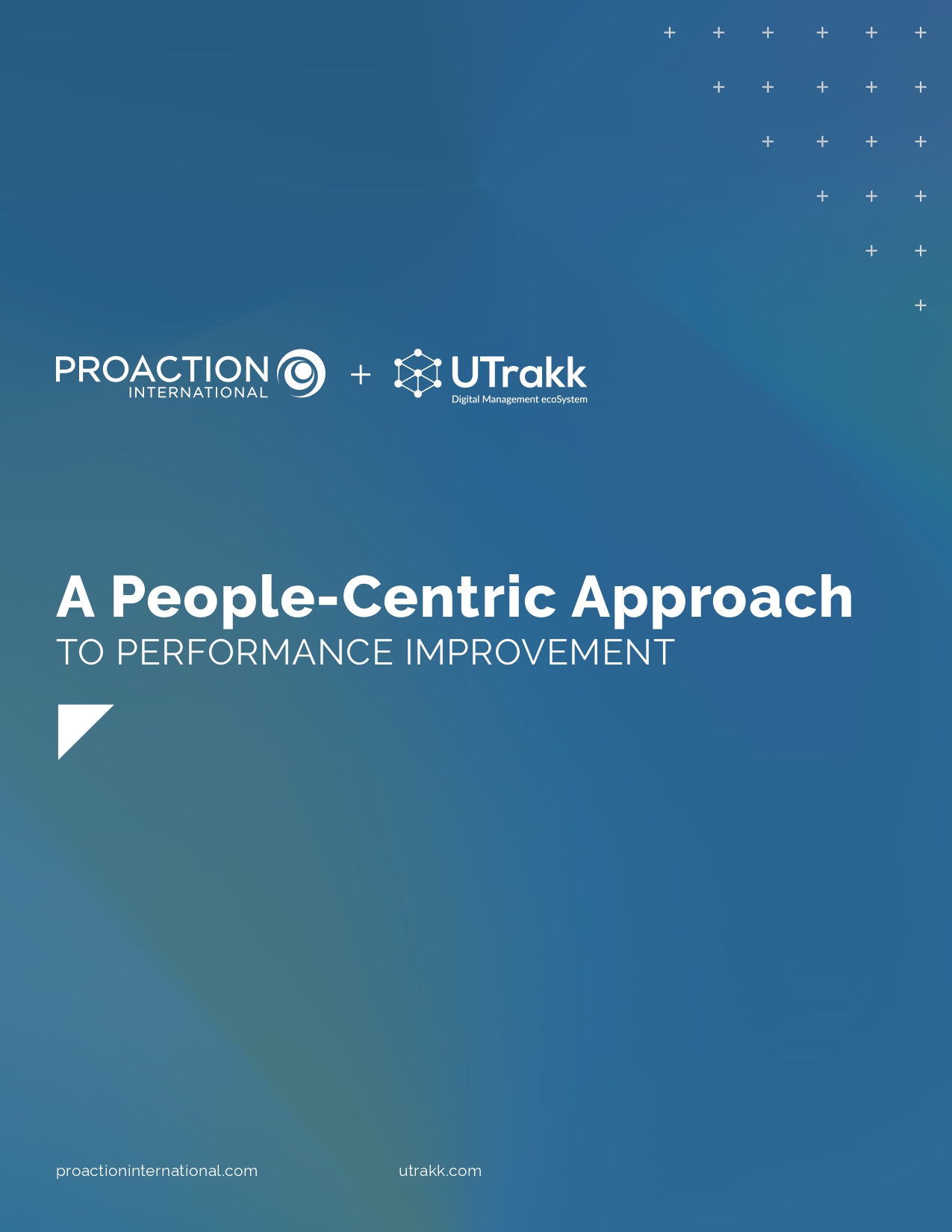What is a Gemba Walk?
The concept of Gemba Walk has its roots in a practice initiated by Taiichi Ohno, the Japanese engineer behind the Toyota Production System (TPS). He regularly asked his managers to stand in a circle drawn in chalk directly on the factory floor – that is the "gemba," the Japanese word for "the actual place" – right at the center of operations. From this circle, they could closely observe processes and gain a deeper understanding of the actual work environment.
Known as Ohno's Circle, the goal of this practice was to develop leaders' analytical and discerning skills by confronting them with concrete facts rather than reports.
As Ohno had understood, operations are better managed where value is created, alongside teams, than behind a desk. Reports and data can provide valuable insights, but they cannot replace direct experience of the realities of the factory floor or the human interactions that occur in the work environment.
Gemba Walk incorporates this philosophy and turns it into a structured and dynamic approach where the supervisor or manager:
-
Walks the floor, actively listens to their employees, and asks about their daily challenges.
-
Shares objectives and reiterates the vision to align and drive continuous improvement efforts.
-
Identifies performance gaps and their causes, and implements corrective or continuous improvement actions.
The objectives of the Gemba Walk
Beyond observing the actual place, Gemba Walk has many objectives:
-
Promote real understanding of business processes to gain a comprehensive view of how the entire value stream operates.
-
Strengthen relationships between managers and their teams by establishing direct and transparent communication and a spirit of collaboration.
-
Develop a culture of continuous improvement by identifying waste, challenges, and opportunities for improvement, and by solving problems at the source.
-
Support leadership development by offering a practical experience that allows managers to perfect their management skills on a daily basis.
-
Align strategic and operational objectives, ensuring everyone understands the "why" behind their day-to-day tasks.
Key elements of a Gemba Walk
Gemba Walk is based on three fundamental elements:
1. Go and see
Observing on-site means seeing reality as it is. The first step is to go where value is created in real time – that is on the floor. Whether it’s in a workshop, on a production line, or in a warehouse, the manager must go into the environment to directly observe actual work processes, working conditions, and available resources.
This immersion allows them to perceive details invisible from an office or in a report, while gaining a fresh perspective on daily operations.
2. Ask why
For an effective Gemba Walk, it's important to engage with teams. This involves asking open questions, actively listening, and encouraging employees to share their experiences.
The 5 Whys method is useful for getting to the root cause of a problem. By asking questions without judgement, team leaders gain valuable insights, avoid jumping to conclusions, and value employees’ field knowledge.
3. Show respect
The Gemba Walk is not meant to oversee and control; it’s a collaborative process that fosters conversation and mutual trust. The leader must approach each interaction with benevolence, recognize the value of the work done, and take a sincere interest in the challenges encountered.
Showing respect encourages employees to express themselves freely, suggest improvement ideas, and find solutions.
Active supervision tours, or enhanced Gemba Walks
Lean Management best practices and floor observations are crucial, but Proaction International’s approach is taking them a step further. We have enriched the method to integrate human capital as a performance axis of the Gemba Walk. This is how the active supervision tour was born. This practice fosters team engagement and involvement by creating dedicated, recurring, and structured moments with their frontline managers.
These regular conversations allow to:
-
Reiterate the organization's goals and values.
-
Share priorities.
-
Quickly identify issues and gaps.
-
Give employees a voice.
While Gemba Walks focus primarily on manufacturing KPIs, active supervision tours add a new dimension – key behavioral indicators (KBIs). These metrics measure management skills, the quality of interactions with team members, and consistency between goals and actions.
By combining KPIs and KBIs, organizations not only improve their short-term operational results but also root best management behaviors, promoting sustainability of continuous improvement efforts and performance.
Virtual Gemba Walks: Extending the practice beyond the shop floor
In increasingly digital and hybrid work environments, traditional Gemba Walks are evolving. Now, virtual Gemba Walks enable managers to connect with distributed teams, observe processes remotely, and maintain a direct line of communication with employees.
While replacing insights gained from being on the shop floor or at the office can be difficult, virtual Gemba Walks provide continuity and inclusivity. They ensure that multi-site operations or remote employees remain aligned, that performance issues are spotted in real time, and that problem-solving is effective.
When combined with digital Gemba Walk tools like UTrakk, organizations can seamlessly integrate in-person and virtual tours, making supervision consistent, efficient, and resilient to today’s operational challenges.
Why are Gemba Walks important?
Observe progress directly on the shop floor
In addition to operational dashboards, Gemba Walks enable leaders to visit the actual workplace and observe progress with their own eyes. They provide proactive, real-time monitoring of daily operations performance.
Go beyond KPIs
Some process issues aren't visible through KPIs. By being on site, managers can identify wasteful activities, inefficiencies, or anomalies that are difficult to spot otherwise, and discover new opportunities to improve processes.
Foster implementation of Kaizen actions
Gemba Walks help identify opportunities for process improvement, making them an ideal starting point for launching Kaizen initiatives (which means “continuous improvement”). Direct observation provides concrete and directly applicable ideas that increase the effectiveness of implemented solutions.
Identify and solve problems effectively
Observing a problem in its context allows for a better understanding of its causes and consequences, which facilitates the implementation of effective solutions that strengthen the organization's ability to meet customer expectations.
Gemba Walk also encourages employees to actively participate in identifying and implementing corrective actions, boosting involvement and engagement.
Strengthen collaboration between the floor and management
Exchanges between management teams and frontline employees during Gemba Walks create a dynamic of collaboration, where the company interacts directly with the people and activities that shape performance. This proximity increases mutual understanding and focuses efforts on shared objectives.
Better prioritize improvement initiatives
Through a more detailed understanding of floor activities, team leaders can assign their resources where improvements are most needed. Gemba Walks enable them to better target actions and achieve greater results quickly.
Increase employee engagement
Regular presence of managers on the production floor sends a strong message – employees' work matters. This recognition strengthens their satisfaction and motivation, promoting increased engagement and productivity.
How to conduct effective Gemba Walks
To ensure successful Gemba Walks, preparation is essential. Here are the seven steps to lead effective floor tours:

1. Define the objectives
Before going on site, it’s essential to define the purpose of your Gemba Walk. Set clear objectives – whether to drive process improvement, optimize quality, or boost team engagement. These goals will help guide your focus during the Gemba Walk.
2. Prepare and plan the route
Define a precise route, choose the most relevant times of the day, and determine the duration and frequency of the Gemba Walk – 20 to 60 minutes, with a frequency adapted to your context (daily, weekly, or monthly).
Then, prepare an observation checklist including questions to ask and elements to verify based on your objectives. Finally, gather information and data from dashboards, key performance indicators, process flow charts, etc. to compare with your observations.
3. Inform teams to build trust
To truly work, the process must be transparent. Give your employees advance notice and clearly explain the intention behind the initiative – Gemba Walks are all about learning, continuously improving, and not criticizing. This will foster employee buy-in.
Present the Gemba Walk schedule to make sure employees know what to expect. Share your checklist with them and incorporate their suggestions. You may discover blind spots or operational aspects you hadn't considered during preparation. This strengthens the overall Gemba Walk process.
4. Lead the walk and observe with an open mind
During the Gemba Walk, carefully listen and observe. Watch without interrupting, ask open-ended questions, and focus on processes rather than individuals. Your role as a manager is to understand and learn, not to point fingers.
5. Record observations with rigor
Take the time to thoroughly write down your observations: gaps, wasteful activities, malfunctions, non-conformities, etc. In each case, specify the context to facilitate analysis.
Also collect employee feedback. Photos and detailed notes will help you identify opportunities for improvement and prioritize actions.
6. Analyze findings to plan actions
After the Gemba Walk, organize a team meeting – sometimes called a “Gemba Kaizen Circle” – to analyze findings. Discuss the identified problems and collectively seek sustainable solutions that will resolve issues and improve processes over time.
The involvement of line workers and project team members is essential as they are the ones who best understand the reality of the production floor; their experience can propel companies toward continuous improvement and operational excellence.
7. Ensure follow-up and regularity
Plan regular floor tours, closely monitor implemented initiatives, and adjust the approach over time. Recurrence and discipline will help to sustain a culture of continuous improvement and Lean Management in your organization.
There’s no single recipe for the Gemba Walk. Each company must adapt this activity to its specific processes, strategic goals, and culture. The key is to apply the basic principles mentioned above: go and see, ask questions, and show respect to people.
Creating the perfect Gemba Walk checklist
Define the goal of the Gemba Walk checklist
Ask yourself what the purpose of your Gemba Walk checklist is. Do you want to closely monitor the productivity of your lines? Or monitor compliance with health and safety rules in the work environment? Set a clear goal to guide your questions and make thorough and comprehensive observations.
Organize the Gemba Walk checklist by category
Organize your Gemba Walk checklist into themes or sections (e.g., health and safety in the workplace, production or business processes, quality standards, employee morale and behaviors, etc.). This will keep your Gemba Walk structured and organized, and prevent you from missing anything. Each category must contain checkpoints and related questions.
Write relevant, open-ended questions
Questions should help identify inefficiencies, non-conformities, and anomalies but also explore the "why" of the events. Here are some real life examples:
Safety and work conditions (ideal for a safety Gemba Walk):
-
Are safety instructions being followed?
-
Is every employee wearing their personal protective equipment?
Work standards and processes:
-
Is the work standard displayed for all to see?
-
Are there any deviations from the planned operating procedure?
Flow and equipment:
-
Is the necessary equipment within easy reach?
-
Are there any unnecessary movements that could be avoided?
Behaviors and collaboration:
-
Do team members communicate with each other?
-
Does the operator feel listened to and supported by their manager?
Improvements opportunities:
-
Do you see improvement opportunities for this production line?
-
What would you do differently if anything was possible?
Provide multiple types of field
Each question or checkpoint must include a space to:
-
Note the observation (text).
-
Attach a photo or image.
-
Define an action (description of the action, owner, deadline).
-
Indicate the priority level (urgent, medium, or low).
Use a digital platform
Tools to create digital Gemba Walk checklists include multiple features that increase the efficiency of this practice:
-
Real-time recording of observations.
-
Ability to add photos, images, and videos.
-
Instant creation of corrective actions.
-
Automatic report generation.
-
Historic of all Gemba Walks.
A Gemba Walk checklist is never set in stone. During your first floor tours, you'll most likely identify missing checkpoints or questions that need to be reworded. Gather feedback from users (managers and frontline workers) to improve your checklist.
Boost the impact of your daily Gemba Walks with UTrakk
To fully benefit from your Gemba Walks, it's essential to rely on digital tools that can ritualize, structure, and sustain good management practices.
This is precisely what UTrakk Daily Management System (DMS) enables. More than a tracking application, this software offers a complete set of functionalities to boost the impact of each Gemba Walk by combining accurate observations and KPIs with rich human interaction.
With UTrakk, you can:
-
Manage your operations in real time with structured and regular Gemba Walks, which highlight work progress and KPIs.
-
Quickly detect deviations using digital checklists, providing information on the status of lines, machines, products, and more. Efficiently assign, track, and resolve each issue by assigning clear actions to dedicated managers, with defined deadlines.
-
Centralize and analyze your field data using integrated dashboards that facilitate performance monitoring.
Digitalizing your Gemba Walks with UTrakk ensures consistent, traceable, and regular active supervision practices. The result? Proactive daily management, stronger alignment between managers and their teams, and sustainable, continuous improvement of operations.
Turn your Gemba Walks into performance and engagement drivers
Gemba Walk isn’t just a simple stroll through the factory or the office. Part of the Lean Management philosophy, this practice is an act of leadership that changes the way organizations learn, collaborate, and progress.
While some see it as a necessary management routine, those who grasp its essence understand that it’s a true cultural event, a moment that brings managers closer to the realities of the floor, gives teams a voice, and fosters concrete solutions for continuous process improvement.
In a context where operational complexity and talent scarcity require greater proximity and agility, organizations that conduct Gemba Walks as a living and meaningful ritual gain a competitive edge in driving sustainable performance and engagement.









